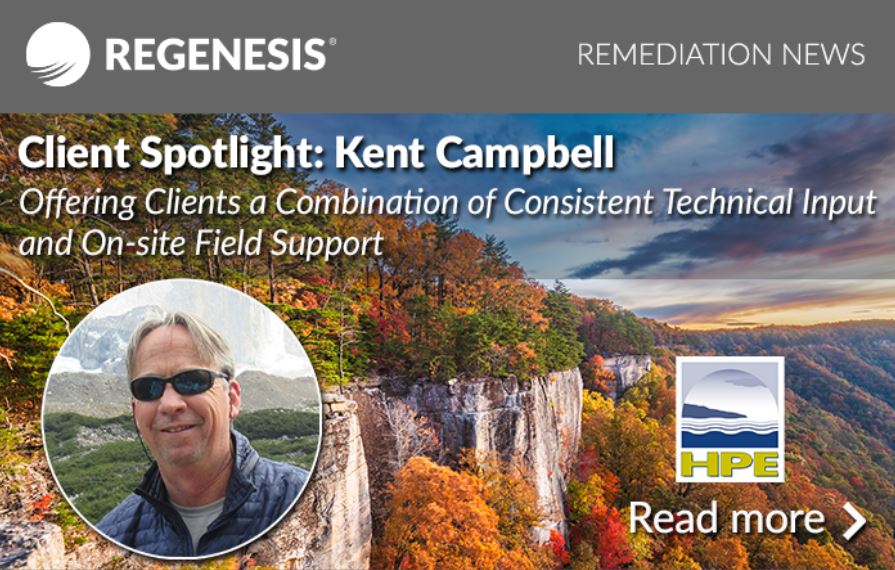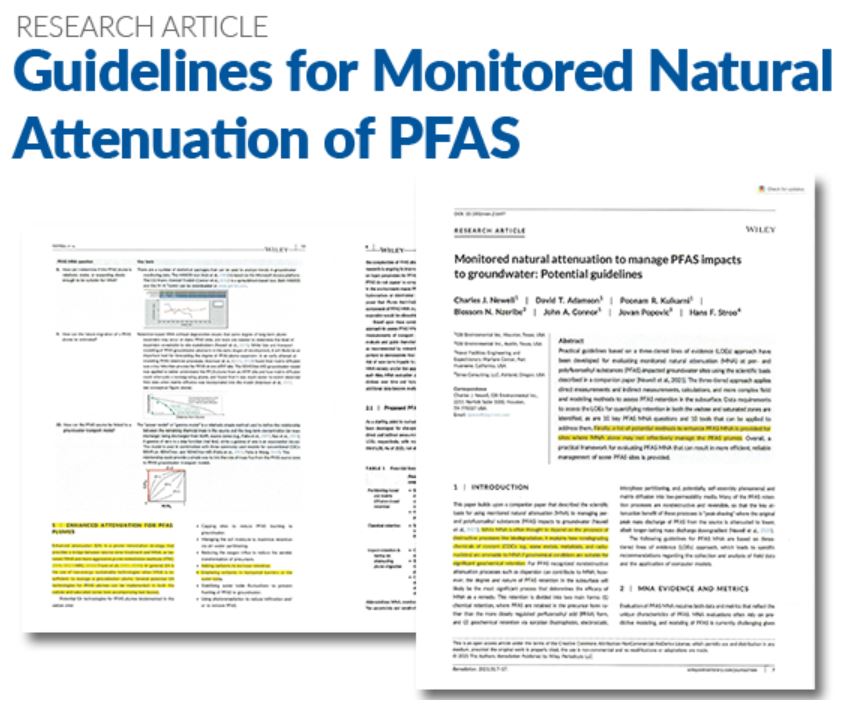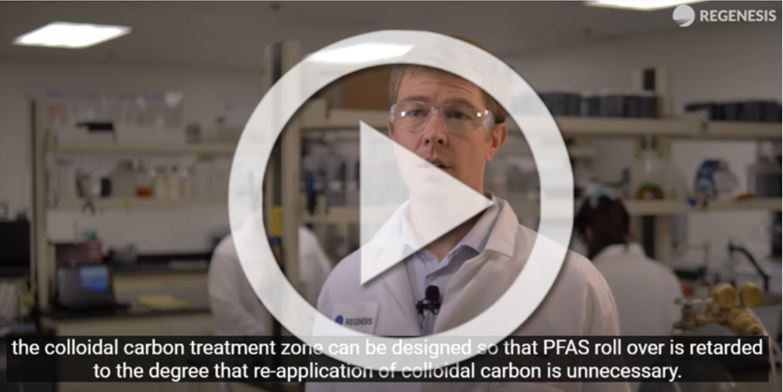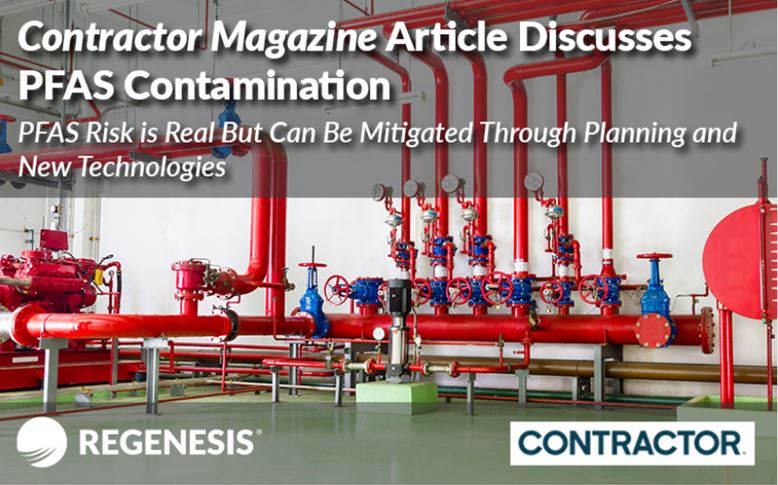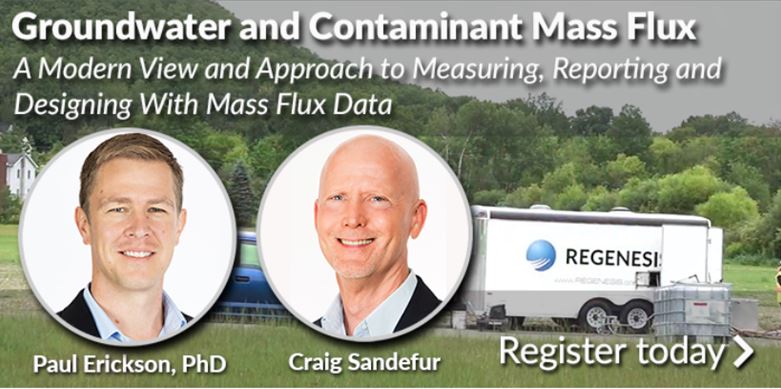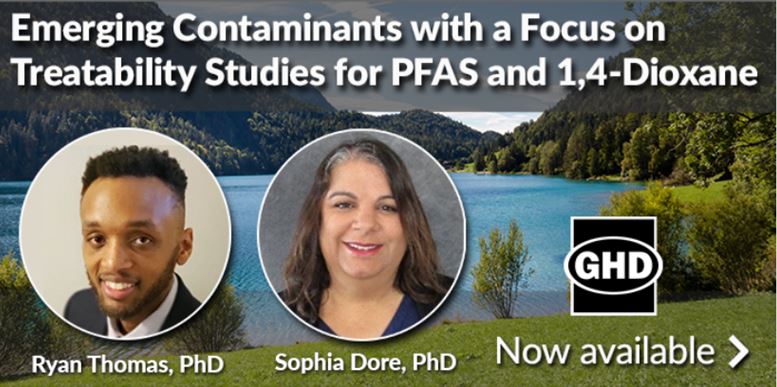December 2021 Newsletter
Client Spotlight: Kent Campbell
As a Certified Professional Geologist, Kent Campbell, Director of Site Assessment, Monitoring & Compliance for HP Environmental, Inc., appreciates his hands-on role, knowing he is uniquely positioned to offer clients a combination of consistent technical input and on-site field support. He begins, “I have always worked for smaller firms because I enjoy the daily interaction with clients, while still being able to offer ‘boots on the ground’ work and project support. Working at a smaller firm, such as HPE, allows me to be more responsive and nimble when it comes to project needs and demands.” Learn more in our client spotlight.
Subscribe To Our Monthly Newsletters
New Research Article Provides Guidelines for Monitored Natural Attenuation of PFAS Contaminants in Groundwater
This article by Charles J. Newell et al. published in Wiley’s Remediation Journal discusses practical guidelines based on a three-tiered line of evidence (LOE) approach for evaluating monitored natural attenuation (MNA) of PFAS. The approach outlined provides methods to assess PFAS retention in the subsurface. It also includes a list of methods to enhance MNA of PFAS plumes if MNA alone is not sufficient to manage the risk of the plume. Read the full article below.
Technical Memo from REGENESIS CEO Scott Wilson Outlines „Key Takeaways“ from the Article by Newell et. al. about MNA of PFAS
Below is a technical memorandum written by REGENESIS President & CEO Scott Wilson that summarizes what he sees as the „key takeaways“ from this very important research paper by Charles Newell et. al. entitled “Monitored Natural Attenuation to Manage PFAS Impacts in Groundwater” (see above for a highlighted version of this article). Key takeaways include a key concept that is intrinsic to environmental risk: Environmental Risk = Hazard X Exposure. By eliminating the potential for exposure, the risk is eliminated. This is how natural attenuation works. Download the technical memo written by Scott Wilson to learn more.
Video: Understanding the In Situ Treatment of PFAS Using PlumeStop Colloidal Activated Carbon
With PlumeStop, remediation professionals gain a solution that will provide an effective, more economical means of stopping the migration of PFAS plumes, thereby protecting sensitive receptors. There are many possible remedial design strategies for the in-situ containment of PFAS using PlumeStop. This video includes a technical explanation of how PlumeStop colloidal activated carbon functions within an aquifer to purify groundwater of PFAS contamination. It also contains subtitles in multiple languages, which you can select in the settings of the video player.
Contractor Articles Discusses Mitigating PFAS Contamination Risk for Building Development
Eliminate the Risk of PFAS with Colloidal Activated Carbon
In situ remediation with colloidal activated carbon eliminates risk of PFAS contamination in soil and groundwater at a low-cost. By coating flux zones of an aquifer with colloidal activated carbon, a permeable sorption barrier is created in situ, purifying groundwater as it passively migrates. PFAS constituents from up-gradient source zones are rapidly sorbed to the carbon and removed from the mobile dissolved phase. By removing PFAS from the mobile phase, the route of exposure to down-gradient receptors is eliminated, thereby eliminating the down-gradient public health risk associated with PFAS.
Sign Up for the Upcoming Webinar to Learn About Direct Measurement of Mass Flux
In this webinar we are pleased to have a special presentation from Paul Erickson, PhD, Director of Research & Development at REGENESIS, and Craig Sandefur, Vice President of Remedial Applications Development at REGENESIS. Their presentation will discuss groundwater and contaminant mass flux and a modern approach to measuring, reporting and designing with mass flux data. This webinar starts Thursday, December 16th, 2021 at 11am pacific/2pm eastern.
Webinar Recording Now Available with Leading Emerging Contaminants Experts from GHD
In this webinar we were pleased to have as special guest speakers Ryan Thomas, PhD, Associate and Emerging Contaminants Practice Leader and Sophia Dore, PhD, Associate and Director of the Innovative Technology Group at GHD. Their presentation discussed emerging contaminants with a focus on treatability studies for PFAS and 1,4-Dioxane. They were joined by Kristen Thoreson, PhD, Vice President of Quality & Process Improvement at REGENESIS, who discussed the use of colloidal activated carbon in the remediation industry as a low-cost method of eliminating PFAS risk. The full recording is now available.
Questions?
REGENESIS has remediation experts based worldwide to assist you in your brownfield site cleanup. As the technology leader in advanced bioremediation solutions, we can help ensure success on your next remediation project. Use the map on our website to find your regional REGENESIS contact today.

